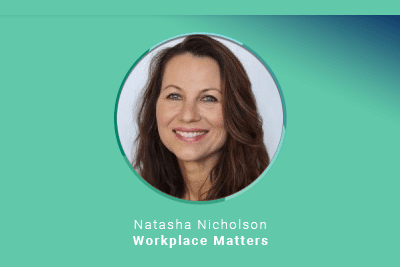
The past few years have rocked us with a pandemic, presented us with volatile political and economic realities and revolutionized the way we think about work. And at this moment, during all this tumult, the only thing that seems certain is the uncertainty ahead. That’s a fragile place to be, and yet out of it all, something surprising has come about. In our response, there’s a strength and a unity that has unfolded in many of us. We think more deeply about what it means to belong to an organization, we question our larger purpose, and we reaffirm our intent to make workplaces better, for everyone. Let’s look at how this mix of events, and our reactions to them, have shaped the latest workplace trends, as we prepare for the year ahead, and beyond.
1. As uncertainty and change loom ahead, culture remains critical
The business outlook for the year ahead is mixed, and much depends on economic and political factors, and other realities that are largely out of our control. It’s possible that our organizations will be faced with some significant challenges—revenue drops and cost increases may result in tightened resources, potential layoffs and greater turnover. Our ability to remain resilient will be in the flexibility with which we can ride the tides of change and in our steadfast resolve to maintain a positive culture. There are some specific reasons why culture, especially in times of uncertainty, is more important than ever.
Missteps with culture are noticed long into the future — Long after the economic twists and turns of the moment have passed, your organizational culture will be noticed in reviews on forums such as Glassdoor—affecting how customers and prospective employees view your organization, impacting future talent retention and recruitment.
Culture affects employee engagement — In times of uncertainty, employee engagement, which is closely related to productivity and performance, becomes critical. Research shows that, “Companies with a robust culture have up to a 72 percent higher employee engagement than those whose cultures are misaligned or need improvement,” and “more than 74 percent of American workers believe culture influences their job performance on everything from efficiency to doing their best work, to serving customers to the best of their ability.”
Survival mode can affect culture and create risks — Survival mode and the stress it creates can have a negative effect on culture, creating reputational and legal risks for organizations and their employees. Consider research showing that organizational culture can contribute to whether sexual harassment occurs and is reported and among employees, stress can lead to increased instances of bad behavior and harassment in the workplace.
2. Heightened focus on employee experience (companies benefit too)
Post-pandemic, an increasing focus on employee experience has taken hold. Employees continue to reevaluate and reprioritize work/life balance, mental well-being and psychological safety. People want to be seen as individuals, each with a unique identity and set of needs that must be considered. The best news? Companies are increasingly seeing the organizational benefits that putting a focus on employee experience can create—such as greater productivity and higher performance. And the related data and expert guidance is compelling.
Work/life balance prompts employees to go above and beyond — A survey of 30,000 employees showed that when organizations support healthy work-life balance and flexibility, employees are willing and capable of making a greater commitment: 63 percent of those who rate their work-life balance highly are willing to go above and beyond for their organizations.
Mental health and psychological safety are a growing priority – Sounding the alarm and urging organizations to take action, a recent Surgeon General’s Framework for Mental Health & Well-Being in the Workplace asks organizations “to rethink how they protect workers from harm, foster a sense of connection among workers, show workers they matter, make space for their lives outside work, and support their growth. It will be worth it, because the benefits will accrue for workers and organizations alike.”
3. Leader and manager effectiveness are key
“Today’s work environment requires leaders to be more authentic, empathetic and adaptive. These three imperatives represent a new call for leadership: ‘human’ leadership.” So says Gartner, in a recent study which found that leader and manager effectiveness is a priority for 60 percent of HR leaders, yet 24 percent say their leadership development approach does not prepare leaders for the future of work.
The study makes the case that “as organizations and society evolve, so do the expectations for what leaders are responsible for, making their roles increasingly complex.” To address this challenge, leaders must take specific steps to increase their effectiveness in the year ahead.
Become adept with inclusive management practices —To be effective, managers must receive the tools and guidance they need to become adept with inclusive management practices, including managing diverse teams, recruiting and hiring, facilitating team meetings, resolving conflicts, evaluating internal candidates and creating equitable advancement.
Build trust through transparency — A recent study found that not only do employees value trust as part of their employee experience, trusted companies outperform their peers by 400 percent. Another critical takeaway—the survey also found that factors such as level of truthfulness, transparency and tolerance for toxic behavior can quickly sway trust in a negative direction.
4. DEI deepens and broadens—with greater intentionality and accountability
The approach to organizational diversity, equity and inclusion continues to evolve and unfold. But to be clear, DEI is not a trend, it’s become part of the very fabric of our organizations. And whether we are facing a time of prosperity, or a time of uncertainty, DEI affects the ability for both organizations and their employees to perform at their best. In the year ahead, there are some specific ways or “trends” in how DEI can advance.
DEI deepens and broadens to include different identities — While attention to race and gender will remain crucial, there is an increased recognition that many other characteristics are also important to be included and addressed when we think about diversity—such as neurodiversity, religious beliefs and different physical abilities.
Training becomes intentional and actionable — The time when it was acceptable to use training as a DEI checklist item has long since passed. Now, to be effective training must be insightful, relatable and actionable. It must be nuanced enough to address issues that help prevent harassment, not just blatant misconduct that is obvious to all.
Increased support and accountability are expected — While there is wide acknowledgement that a diverse, equitable and inclusive environment is everyone’s responsibility, leaders and managers hold an especially high level of influence and power to create change. Holding leaders accountable for inclusive management practices will take center stage in the years ahead.
Silos come down as organizational teams unite around common efforts — By now it’s well established that DEI is not just an HR priority, but rather an organizational mandate. And with that, there’s no room for siloed thinking to advance DEI efforts. Organizational units, like recruitment, talent management and learning and development teams can respond by uniting around common goals.
5. The future of work continues to evolve
Where, when and how we work will continue to evolve in the years ahead. All signs are that the hybrid/remote workplace appears to be here to stay, and data on the effectiveness of that model is mounting. At the same time, to fulfill both employee and organizational needs, upskilling and personal development are poised to take center stage.
Hybrid/remote work model is here to stay — Gallup projects that about 75 percent of remote-capable workers will be hybrid or fully remote in the long term and Gartner’s research indicates that 94 percent of organizations are allowing employees more flexibility as to where and when they work. And recently, three new studies show that the hybrid/remote model can be a highly effective way to work.
Upskilling and soft skills take center stage — Robert Boersma with Talent.com is among the experts who predicts that, “…With economic uncertainty on the horizon, upskilling opportunities for the workforce will become a prominent retention strategy.” He adds that “…Soft skills in particular are invaluable to an organization and possessing these skills often sets top leaders apart. Interpersonal communication, decision-making, time management and collaboration are all soft skills for employees and job seekers alike to focus on in the new year, to increase their value in the workforce.”
6. Purpose-driven organizations hold the higher ground
Purpose or mission driven organizations have always enjoyed a special place in the business environment. Why? Because they connect to a larger purpose and create a compelling reason for being—which attracts both customers and employees. According to research from Deloitte, “Purpose-oriented companies have higher productivity and growth rates, along with a more satisfied workforce who stay longer with them.” Their research shows that “such companies report 30 percent higher levels of innovation and 40 percent higher levels of workforce retention than their competitors.”
And that differentiator becomes that much more important in a time of uncertainty. All things being equal, customers will want to buy from, and employees will want to work for, a company that actively represents, and works toward, the social good. Those companies that take a stand on social issues which benefit their local and global communities, embrace DEI, protect their employees from harassment in the workplace and uphold social justice will continue to be rewarded in the years ahead.
For HR and talent professionals, and for all of us who manage people, the trends above present us with both challenges and opportunities. They show that even in this time of uncertainty, we have a chance to bring ourselves that much closer to understanding the thoughts, needs and motivations of our internal customers—the employees and managers who make up the lifeblood of our organizations.












